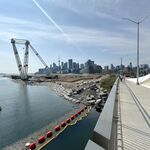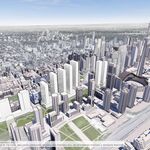reaperexpress
Senior Member
We do indeed need to drag the MTO kicking and screaming when it comes to cycling infrastructure, but luckily the provincial cycling design book (Ontario Traffic Manual Book 18) is actually led by the Ontario Traffic Council which is mostly separate from the MTO. The current OTM Book 18 (2021) is actually pretty good. In the past I would usually need to refer to Dutch design standards when advocating for better infrastructure but nowadays I can just point to our very own manuals that say the same thing. It can take many years between design and construction so some designs currently under construction predate the current manual (and nearly all of them predate the Protected Intersection guide) so we can expect an improvement in quality in the coming few years as smaller cities now have world-class Ontario manuals to look to.I knew that Ottawa was ahead of the curve with protected intersections but I was surprised that they have that many. Props to Ottawa then.
We really need updated provincial standards for cycling infrastructure. Too many municipalities are still designing new bike infrastructure as lines of paint that disappear at intersections or multi use trails that treat cyclists like pedestrians at intersections. You can tell which municipalities take cycling seriously and which treat it as little more than checking a box. Clearly the provincial government (and MTO in particular) falls in the latter camp.
The previous Book 18 was crap, it basically said "i dunno, just do whatever i guess". I think it was the shortest-lived OTM book ever, it was published in 2014 and was already replaced in 2021. By comparison the current Book 12 (Traffic signals) is from 2012 and will be replaced in 2025.
Last edited:




